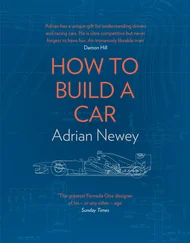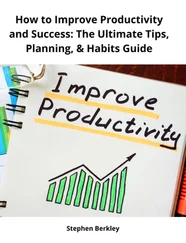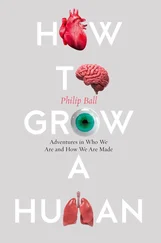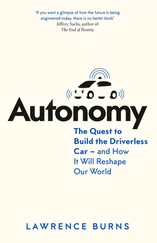Eyal, Nir - Hooked - How to Build Habit-Forming Products
Здесь есть возможность читать онлайн «Eyal, Nir - Hooked - How to Build Habit-Forming Products» весь текст электронной книги совершенно бесплатно (целиком полную версию без сокращений). В некоторых случаях можно слушать аудио, скачать через торрент в формате fb2 и присутствует краткое содержание. Год выпуска: 2014, Издательство: Nir Eyal, Жанр: Старинная литература, на английском языке. Описание произведения, (предисловие) а так же отзывы посетителей доступны на портале библиотеки ЛибКат.
- Название:Hooked: How to Build Habit-Forming Products
- Автор:
- Издательство:Nir Eyal
- Жанр:
- Год:2014
- ISBN:нет данных
- Рейтинг книги:5 / 5. Голосов: 1
-
Избранное:Добавить в избранное
- Отзывы:
-
Ваша оценка:
- 100
- 1
- 2
- 3
- 4
- 5
Hooked: How to Build Habit-Forming Products: краткое содержание, описание и аннотация
Предлагаем к чтению аннотацию, описание, краткое содержание или предисловие (зависит от того, что написал сам автор книги «Hooked: How to Build Habit-Forming Products»). Если вы не нашли необходимую информацию о книге — напишите в комментариях, мы постараемся отыскать её.
Hooked: How to Build Habit-Forming Products — читать онлайн бесплатно полную книгу (весь текст) целиком
Ниже представлен текст книги, разбитый по страницам. Система сохранения места последней прочитанной страницы, позволяет с удобством читать онлайн бесплатно книгу «Hooked: How to Build Habit-Forming Products», без необходимости каждый раз заново искать на чём Вы остановились. Поставьте закладку, и сможете в любой момент перейти на страницу, на которой закончили чтение.
Интервал:
Закладка:
Entertainment is a hits-driven business because the brain reacts to stimulus by wanting more and more of it, ever hungry for continuous novelty. Building an enterprise on ephemeral desires is akin to running on an incessantly rolling treadmill: You have to keep up with the constantly changing demands of your users. In this quadrant, the sustainable business is not purely the game, the song, or the book — profit comes from an effective distribution system for getting those goods to market while they’re still hot, and at the same time keeping the pipeline full of fresh releases to feed an eager audience.
The Dealer
Creating a product that the designer does not believe improves users’ lives and that he himself would not use is called exploitation. In the absence of these two criteria, presumably the only reason the designer is hooking users is to make a buck. Certainly there is money to be made addicting users to behaviors that do little more than extract cash; and where there is cash, there will be someone willing to take it.
The question is: Is that someone you? Casinos and drug dealers offer users a good time, but when the addiction takes hold, the fun stops.
In a satirical take on Zynga’s FarmVille franchise, Ian Bogost created Cow Clicker, a Facebook app where users did nothing but incessantly click on virtual cows to hear a satisfying “moo.” [cxxiii]Bogost intended to lampoon FarmVille by blatantly implementing the same game mechanics and viral hacks he thought would be laughably obvious to users. But after the app’s usage exploded and some people became frighteningly obsessed with the game, Bogost shut it down, bringing on what he called “The Cowpocalypse.” [cxxiv]
Bogost rightfully compared addictive technology to cigarettes. Certainly, the incessant need for a smoke in what was once a majority of the adult U.S. population has been replaced by a nearly equal compulsion to constantly check our devices. But unlike the addiction to nicotine, new technologies offer an opportunity to dramatically improve users’ lives. Like all technologies, recent advances in the habit-forming potential of digital innovation have both positive and negative effects.
But if the innovator has a clear conscience that the product materially improves people’s lives — first among them, the designer’s — then the only path is to push forward. With the exception of the addicted one percent, users bear ultimate responsibility for their actions.
However, as the march of technology makes the world a potentially more addictive place, innovators need to consider their role. It will be years, perhaps generations, before society develops the mental antibodies to control new habits; in the meantime, many of these behaviors may develop harmful side-effects. For now, users must learn to assess these yet-unknown consequences for themselves, while creators will have to live with the moral repercussions of how they spend their professional lives.
My hope is that the Manipulation Matrix helps innovators consider the implications of the products they create. Perhaps after reading this book, you’ll start a new business. Maybe you’ll join an existing company with a mission to which you are committed. Or, perhaps you will decide it is time to quit your job because you’ve come to realize it no longer points in the same direction as your moral compass.
***
Remember and Share
- To help designers of habit-forming technology assess the morality behind how they manipulate users, it is helpful to determine which of the four categories their work fits into. Are you a facilitator, peddler, entertainer, or dealer?
- Facilitators use their own product and believe it can materially improve people’s lives. They have the highest chance of success because they most closely understand the needs of their users.
- Peddlers believe their product can materially improve people’s lives, but do not use it themselves. They must beware of the hubris and inauthenticity that comes from building solutions for people they do not understand.
- Entertainers use their product, but do not believe it can improve people’s lives. They can be successful, but without making the lives of others better in some way, the entertainer’s products often lack staying power.
- Dealers neither use the product nor believe it can improve people’s lives. They have the lowest chance of finding long-term success and often find themselves in morally precarious positions.
***
Do This Now
- Take a minute to consider where you fall on the Manipulation Matrix. Do you use your own product or service? Does it influence positive or negative behaviors? How does it make you feel? Ask yourself if you are proud of the way you are influencing the behavior of others.
7. CASE STUDY: THE BIBLE APP
In the previous chapter, I urged you to be a facilitator and to use the tools in this book to improve the lives of others. I encouraged you to align your work with a purpose that provides you with meaning and helps cultivate meaning for others. This is not only a moral imperative, it’s good business practice.
The most highly regarded entrepreneurs are driven by meaning, a vision for greater good that drives them forward. Startups are grueling and only the most fortunate persevere before finding success. If you only build for fame or fortune, you will likely find neither. But build for meaning and you can’t go wrong.
The Hook Model is a framework based on human psychology and a close examination of today’s most successful habit-forming products. Now that you have an understanding of the model and the psychology behind why we do the things we do, let’s study how it all comes together in one of the world’s most popular apps. Whether you agree with the mission of the app described below is not important. The lesson here is how a technology company created a user habit while staying true to the founder’s moral calling.
It’s not often an app has the power to keep someone out of a strip club. But according to Bobby Gruenewald, CEO of YouVersion, that’s exactly what his technology did. Gruenewald says a user of his Bible verse app walked into a business of ill repute when suddenly, seemingly out of the heavens, he received a notification on his phone. “God’s trying to tell me something!,” Gruenewald recalled the user saying. “I just walked into a strip club — and man — the Bible just texted me!”
In July 2013, YouVersion announced a monumental milestone for the app, placing it in a rare strata of technology companies. The app, simply called “Bible,” has been downloaded to more than 100 million devices and growing. [cxxv]Gruenewald says a new install occurs every 1.3 seconds.
On average, 66,000 people open the app every second — and sometimes the open rate is much higher. Every Sunday, Gruenewald says, preachers around the world tell congregants to “take out your Bibles or YouVersion app. And, we see a huge spike.”
The market for religious apps is fiercely competitive. Searching for “Bible” in the Apple App Store returns 5,185 results. But among all the choices, YouVersion’s Bible seems to be the chosen one, ranking at the top of the list and boasting over 641,000 reviews.
How did YouVersion come to dominate the digital, “word of God?” It turns out there is much more behind the app’s success than missionary zeal. It’s a case study in how technology can change behavior by marrying the principles of consumer psychology with the latest in big data analytics.
According to industry insiders, the YouVersion Bible could be worth a bundle. Jules Maltz, General Partner at Institutional Venture Partners, told me, “As a rule of thumb, a company this size could be worth $200 million and up.”
Читать дальшеИнтервал:
Закладка:
Похожие книги на «Hooked: How to Build Habit-Forming Products»
Представляем Вашему вниманию похожие книги на «Hooked: How to Build Habit-Forming Products» списком для выбора. Мы отобрали схожую по названию и смыслу литературу в надежде предоставить читателям больше вариантов отыскать новые, интересные, ещё непрочитанные произведения.
Обсуждение, отзывы о книге «Hooked: How to Build Habit-Forming Products» и просто собственные мнения читателей. Оставьте ваши комментарии, напишите, что Вы думаете о произведении, его смысле или главных героях. Укажите что конкретно понравилось, а что нет, и почему Вы так считаете.












